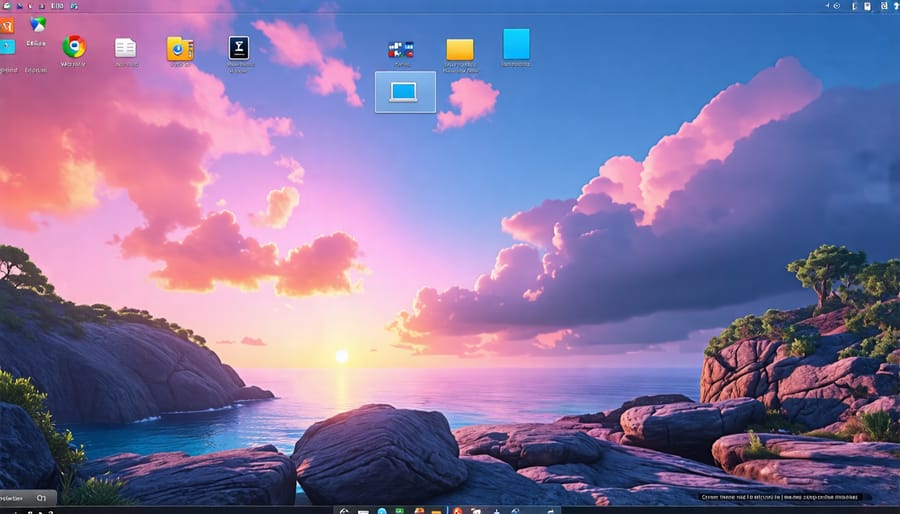Download and install QEMU on your computer to start emulating Raspbian and explore Raspberry Pi capabilities without physical hardware. Obtain a Raspbian image from the official Raspberry Pi website and ensure it is compatible with QEMU for a smooth emulation experience. Configure the QEMU environment by setting up a virtual machine with the correct CPU and memory settings that mirror a Raspberry Pi device. Launch the virtual machine using QEMU’s command line or graphical interface to run Raspbian, allowing you to conduct tests, develop applications, or simply learn the Raspberry Pi environment efficiently from your desktop.
Understanding QEMU and Raspbian
What is QEMU?
QEMU, short for Quick Emulator, is a versatile open-source emulator that enables users to run programs for different hardware platforms on their existing systems. With QEMU, you can emulate a vast array of hardware architectures, making it an invaluable tool for tech enthusiasts, educators, and developers interested in Raspberry Pi projects. Especially popular for emulating Raspbian, the default operating system for Raspberry Pi, QEMU allows you to mirror the Raspberry Pi environment on your computer. This means you can experiment with projects and test software without needing actual Raspberry Pi hardware. QEMU bridges the gap between different hardware ecosystems, offering a low-risk platform to develop, explore, and learn. Whether you’re a curious hobbyist or an educator crafting a classroom experience, QEMU simplifies the process of diving into the Raspberry Pi world from the convenience of your PC.
What is Raspbian?
Raspbian is the heart of the Raspberry Pi ecosystem. Developed as the default operating system, it ensures that anyone can make the most out of their Raspberry Pi with ease. Optimized specifically for Pi hardware, Raspbian offers a user-friendly interface that caters to both beginners and seasoned tech enthusiasts. With a desktop environment that feels familiar and smooth even on modest hardware, Raspbian empowers users to explore endless project possibilities without a steep learning curve. As a branch of the Debian Linux distribution, it provides stability and access to a vast repository of software packages. For those looking to emulate the Raspberry Pi experience on a different setup, using QEMU to run Raspberry Pi OS is a practical and efficient option.
Setting Up Your QEMU Environment

Installing QEMU on Your System
To get started with QEMU, you’ll first need to install it on your system. Here’s how to set it up on different operating systems.
For Windows, download the latest stable version of QEMU from the official QEMU website and run the installer. Follow the on-screen instructions, ensuring to add QEMU to your system’s PATH for ease of access from the command line.
On macOS, use Homebrew to simplify the installation process. Open Terminal and run `brew install qemu`. This command will automatically download and install QEMU along with essential dependencies.
If you’re on Linux, the installation process varies slightly depending on your distribution. For Debian-based systems like Ubuntu, open Terminal and execute `sudo apt-get install qemu`. For Fedora or RHEL-based Linux, use `sudo dnf install qemu-kvm`.
Once installed, verify the installation by opening the terminal or command prompt and typing `qemu-system-arm –version`. If you see version information, you’re all set for the next steps in emulating Raspbian on QEMU.
Preparing Raspbian for Emulation
Begin by downloading the latest Raspbian image from the Raspberry Pi Foundation’s official website. Choose the Lite version if you’re aiming for minimalistic setups or Full if you need the desktop environment. Once downloaded, extract the image file using a tool like WinRAR or 7-Zip. With your Raspbian image ready, it’s time to align it with QEMU. First, create a virtual hard disk from the extracted Raspbian image, a step that’s crucial for emulation. To proceed, install required dependencies such as QEMU itself on your system by following the specific instructions for your OS. Familiarizing yourself with command-line basics is beneficial here. After installing QEMU, configure the virtual machine by pointing it to use the Raspbian image, ensuring you specify the correct architecture like ARM, which mirrors Raspberry Pi hardware. With everything set, initiate the emulation process through your chosen command-line interface. This preparatory work ensures your virtual environment is perfectly tailored to simulate an actual Raspberry Pi experience.
Configuring Necessary Files
To configure your QEMU setup for emulating Raspbian, you need to focus on acquiring and setting up the correct kernel and image files. First, download a suitable kernel for the Raspberry Pi emulation from trusted repositories like GitHub. Ensure the kernel matches the specific Raspbian version you plan to use. Next, acquire the Raspbian image file, which often comes in an .img format. You can find official images on the Raspberry Pi Foundation’s website. Place both files in the same directory for easy access. By properly aligning both kernel and image, you’ll enable a smooth virtual Raspberry Pi environment, ready for experimentation.
Running Raspbian with QEMU
Launching the Emulation
To launch Raspbian in QEMU, you’ll first need to ensure that you have the Raspbian image and QEMU installed on your machine. Begin by opening your terminal and navigating to the directory where your Raspbian image is stored. Use the following command to start the emulation:
“`
qemu-system-arm -kernel kernel-qemu -cpu arm1176 -m 256 -M versatilepb -no-reboot -serial stdio -append “root=/dev/sda2 panic=1” -hda your-raspbian-image.img -net user,hostfwd=tcp::5022-:22 -net nic
“`
Replace `your-raspbian-image.img` with the actual file name of your Raspbian image. This command configures QEMU to emulate a Raspberry Pi ARM architecture, sets the RAM to 256MB, and establishes network settings to facilitate SSH connections.
After executing the command, QEMU will boot up with the Raspbian operating system, allowing you to explore and experiment without physical Raspberry Pi hardware. If you need to access the system via SSH, connect to it using port 5022. This handy setup is perfect for testing, development, or learning more about Raspberry Pi projects.

Initial Configuration
When you first boot up QEMU with Raspbian, there are a few steps you should follow for a seamless experience. Before diving into it, make sure you’ve successfully set up the necessary files in QEMU. Once booted, start by customizing your keyboard layout and language settings to match your preferences, ensuring easier usage. It’s also essential to configure the network settings. Check if the system is connected to the internet by testing with a web browser or command line tools like ‘ping.’ This is crucial for downloading updates and additional software. Next, update your system to the latest versions of the software and security patches using the ‘apt-get update’ and ‘apt-get upgrade’ commands. Don’t skip this step, as it helps in maintaining the security and stability of the emulated environment. To further enhance your setup, consider enabling SSH for remote access—particularly useful if you’re interested in setting up a Raspberry Pi remote desktop. Finally, ensure you allocate sufficient resources such as memory and CPU to QEMU, to prevent any lag during operation.
Troubleshooting Common Issues
When using QEMU to emulate Raspbian, users might encounter a range of issues. A common problem is the boot file not being found. Double-check the file path and ensure it’s correctly linked to the QEMU command. If your emulation is unresponsive or sluggish, allocating more memory can help—adjusting the `-m` flag in your QEMU command can improve performance. Networking issues are another hurdle; if you’re unable to access the internet from your emulated Raspbian, verify the network adapter settings in QEMU. Use the `-net` parameter to configure networking, ensuring it matches your setup needs. For those looking to run a game server or other intensive applications, performance tweaks might be necessary. Always keep your QEMU version updated, as newer versions include bug fixes that can resolve unexpected issues. With these tips, you’ll be better equipped to troubleshoot and enhance your QEMU experience.
Conclusion
QEMU offers a versatile and powerful solution for anyone interested in Raspberry Pi projects, whether you’re a hobbyist eager to experiment with new ideas or an educator looking to bring innovative learning experiences to your classroom. Its ability to emulate the Raspbian environment without the need for physical hardware opens up exciting opportunities for testing and development. This flexibility not only saves time and resources but also reduces the risk of damaging your Raspberry Pi boards, making it an ideal learning tool for beginners and experts alike. By using QEMU, you can simulate various configurations and troubleshoot potential issues in a controlled setting before applying them in real-world scenarios. We encourage you to explore further applications of QEMU within your Raspberry Pi projects, leveraging its capabilities to expand your knowledge and enhance your creativity. Embrace this powerful tool as a gateway to experimenting with digital innovation, and unlock the full potential of your Raspberry Pi endeavors.


